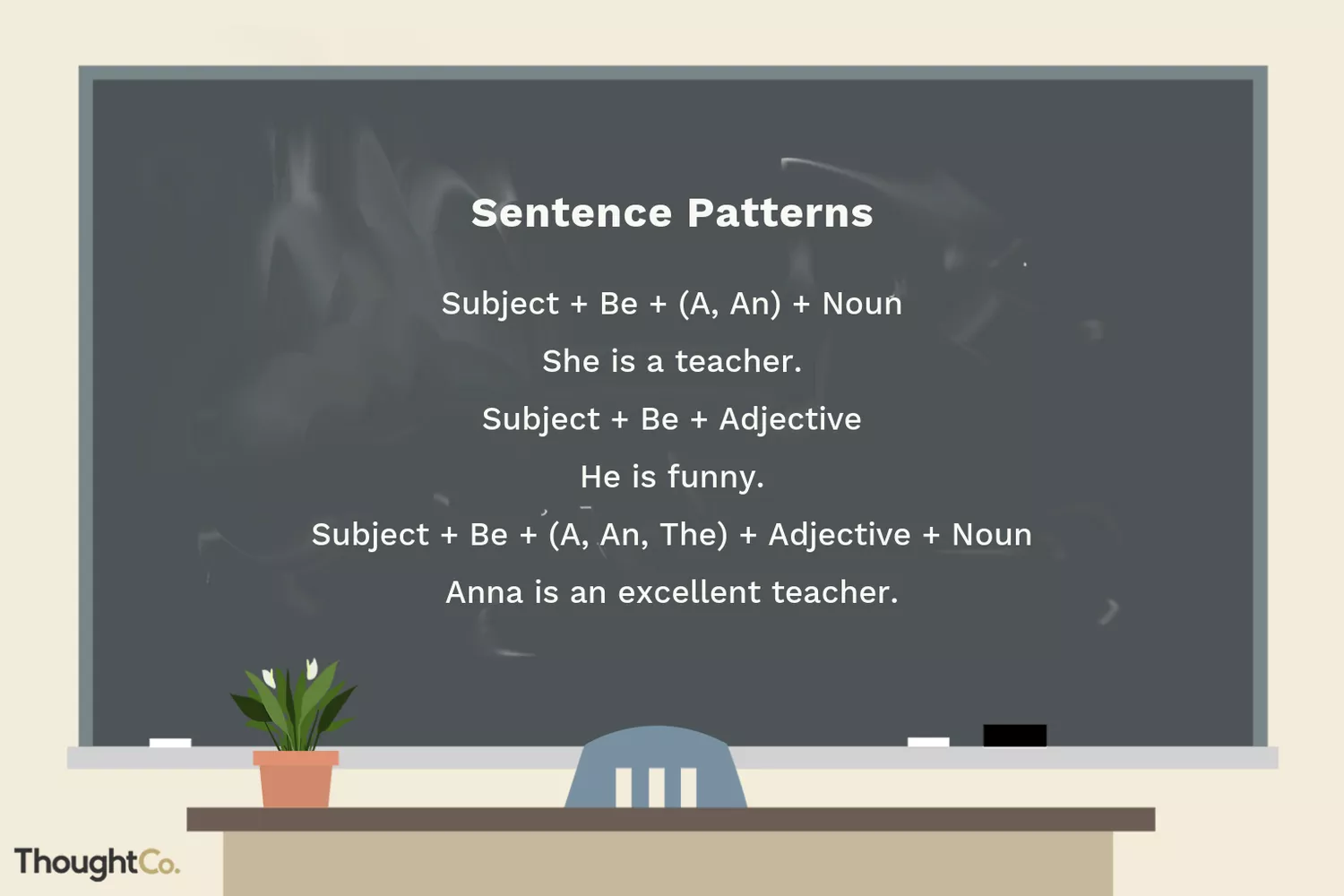
Here are four types of sentences to begin writing in English. Follow the example in each type of sentence. Learn these symbols to understand each type of sentence. These symbols represent parts of speech in English. Parts of speech are the different types of words in English.
Key to Symbols
S = subject
Subjects include I / you / he / she / it / we / they and names of people: Mark, Mary, Tom, etc. or types of people: children, students, parents, teachers, etc.
V = verb
Simple sentences use the verb ‘be’ such as: I am a teacher. / They are funny. Verbs also tell us what we do: play / eat / drive etc. or what we think: believe / hope / want etc.
N = noun
Nouns are objects such as books, chair, picture, computer, etc. Nouns have singular and plural forms: book - books, child - children, car - cars, etc.
Adj = Adjective
Adjectives tell how someone or something is. For example: big, small, tall, interesting, etc.
Prep P = Prepositional phrase
Prepositional phrases tell us where someone or something is. Prepositional phrases are often three words and begin with a preposition: For example: in the house, at the store, on the wall, etc.
() = Parentheses
If you see something in parentheses () you can use the type of word, or leave it out.
Start off Easy: Sentences with Nouns
Here is the first type of easy sentence. Use the verb 'to be'. If you have one object, use 'a' or 'an' before the object. If you have more than one object, don't use 'a' or 'an'.
S + be + (a) + N
I am a teacher.
She is a student.
They are boys.
We are workers.
Exercise: Five Sentences with Nouns
On a piece of paper write five sentences using nouns.
Next Step: Sentences with Adjectives
The next type of sentence uses an adjective to describe the subject of a sentence. Do not use 'a' or 'an' when the sentence ends in an adjective. Do not change the form of the adjective if the subject is plural or singular.
S + be + Adj
Tim is tall.
They are rich.
This is easy.
We are happy.
Exercise: Five Sentences with Adjectives
Use adjectives to write five sentences.
Combine: Sentences with Adjectives + Nouns
Next, combine the two types of sentences. Place the adjective before the noun it modifies. Use 'a' or 'an' with singular objects, or nothing with plural objects.
S + be + (a, an) + Adj + N
He is a happy man.
They are funny students.
Mary is a sad girl.
Peter is a good father.
Exercise: Five Sentences with Adjectives + Nouns
Use adjectives + nouns to write five sentences.
Add Prepositional Phrases to Your Sentences
The next step is to add short prepositional phrases to tell us where someone or something is. Use 'a' or 'an' or use 'the' before a noun or adjective + noun if the object is singular and specific. 'The' is used when something specific is understood by the person writing and the person reading the sentence. Notice that some sentences are written with adjectives and nouns, and others without.
S + be + (a, an, the) + (adj) + (N) + Prep P
Tom is in the room.
Mary is the woman at the door.
There is a book on the table.
There are flowers in the vase.
Exercise: Five Sentences with Prepositional Phrases
Use prepositional phrases to write five sentences.
Start Using Other Verbs
Finally, use other verbs than 'be' to express what happens or what people think.
S + V + (a, an, the) + (adj) + (N) + (Prep P)
Peter plays the piano in the living room.
The teacher writes sentences on the board.
We eat lunch in the kitchen.
They buy food at the supermarket.
Exercise: Five Sentences with Prepositional Phrases
Use other verbs to write five sentences.






Leave a comment
Load more